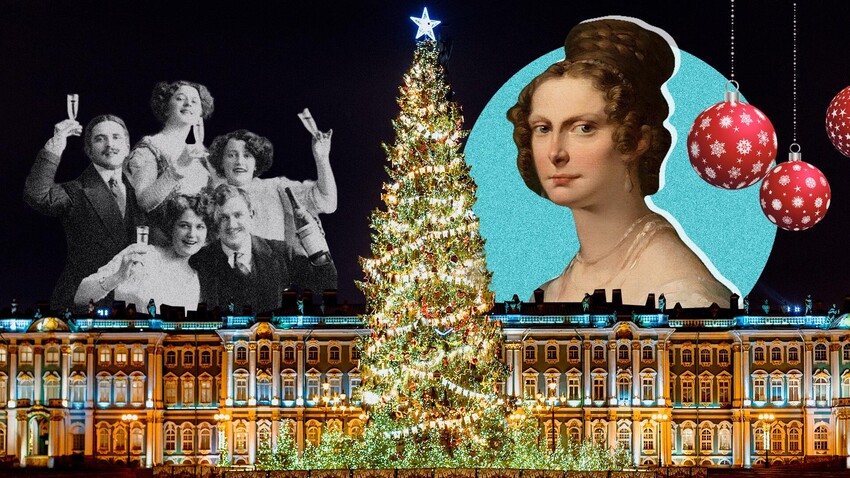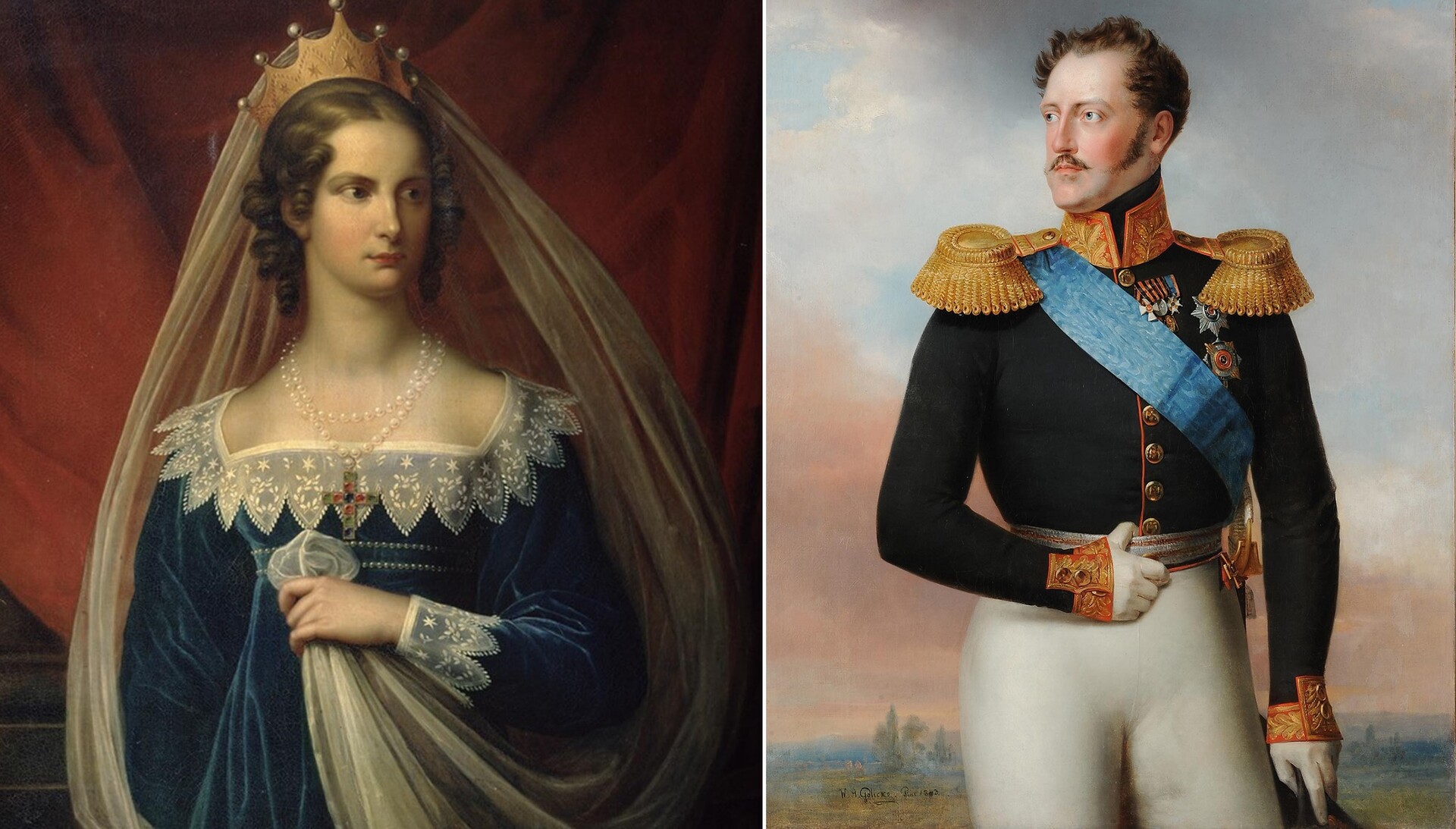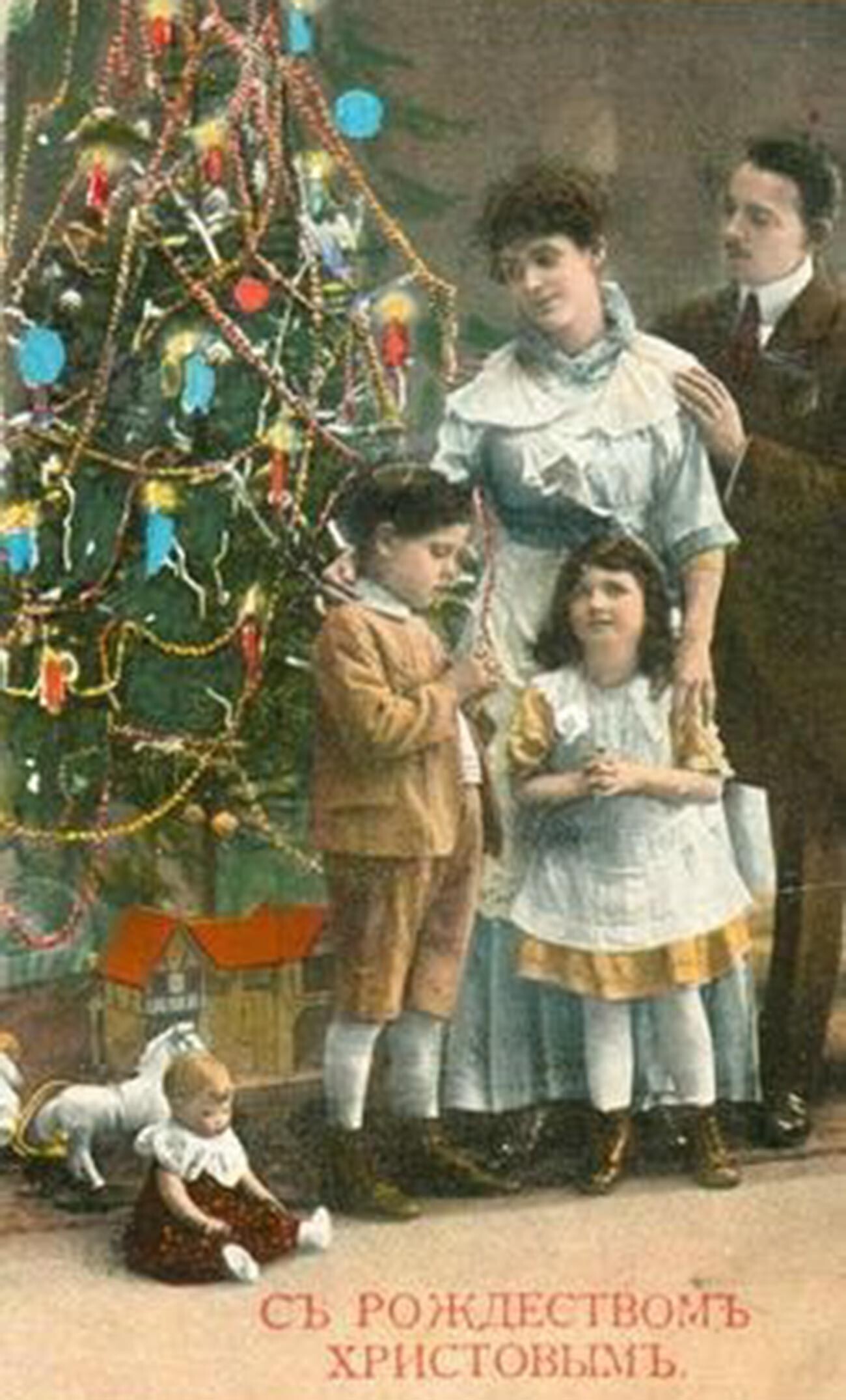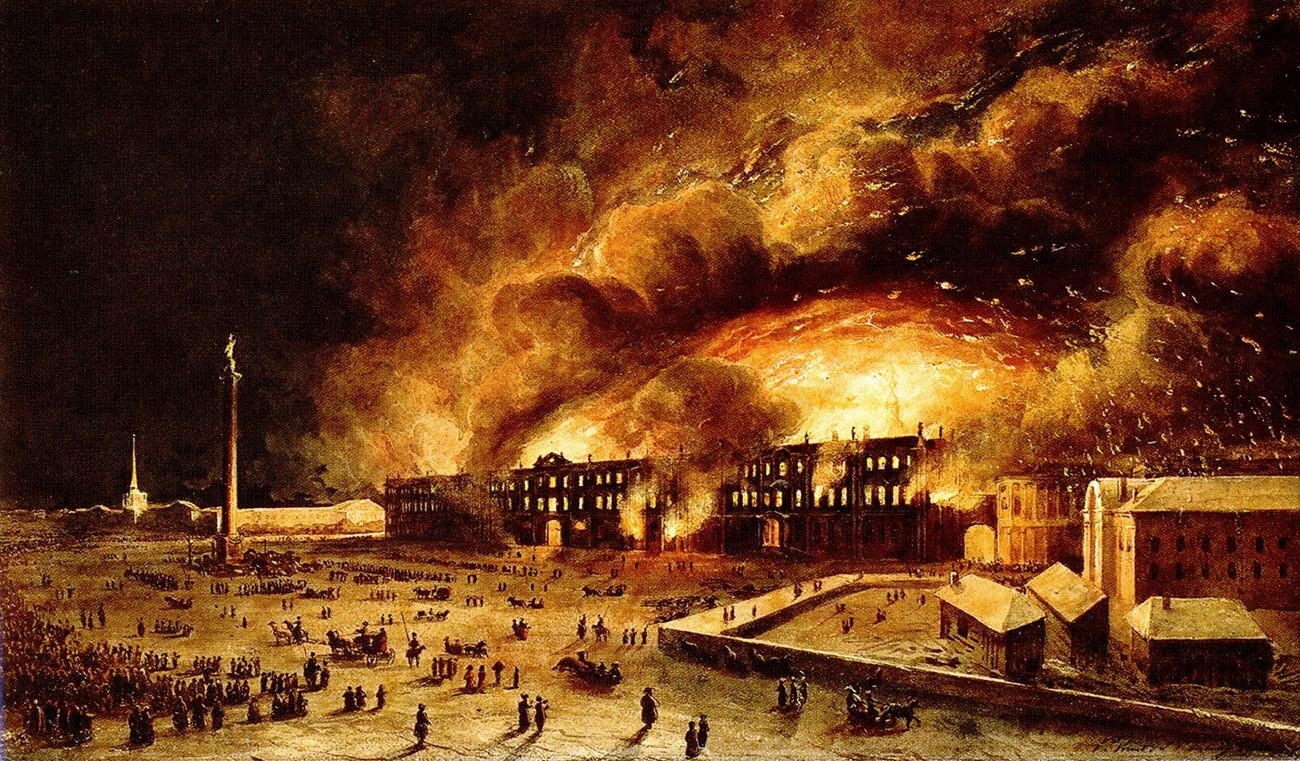
Peter the Great was the first to attempt to popularize the tradition of decorating a Christmas tree. During his travels around Europe he noticed how the locals would decorate a fir for the winter holidays. According to other research, however, the monarch “borrowed” the idea from the Germans who lived in Russia.
One way or another, the emperor at that time wanted to modernize the celebration of New Year’s and used this opportunity to introduce a new tradition to his subjects, ordering, “in one’s house, on large and busy important streets, for noble people and at the designated houses for religious and secular officials, some decorations with trees and branches of pines, firs and juniper should be arranged before the gates <...> and for meager people, each put at least a tree or branches on the gates or over their dwelling.”
The custom, however, didn’t take root, and after Peter the Great’s death decorated trees could only be found in pubs. They were installed at the entrance or on the roof to mark drinking establishments for illiterate people.
Perhaps Russia would have missed this beautiful tradition if the German spouse of Nicholas I didn’t achieve what Peter the Great couldn’t almost a century prior.

Princess Charlotte and Nicholas I of Russia
Gerhard von Kügelgen; Vasily GolikeArriving in Russia in 1817, which now would become her second homeland, German Princess Charlotte grieved and cried a lot from worrying before meeting the family of her fiance. This she admitted to in her memoirs. The Romanovs, however, offered her a warm welcome. The marriage with Nicholas Pavlovich, the Grand Duke at that time was not just a marriage of convenience but something also based on mutual sympathy. However, Alexandra Feodorovna (the name Charlotte received after converting to Orthodox Christianity) continued to miss her home and her loved ones.
Perhaps this homesickness forced Alexandra Feodorovna to ask her husband to install a Christmas tree in her chambers in Moscow for December 24, 1817, and which was decorated according to Prussian traditions. Next year, a Christmas tree appeared in the imperial residence, the Anichkov Palace in St. Petersburg, and in 1828, Alexandra Feodorovna, already an empress, arranged the first “Christmas tree party” for the royal family.

Such celebrations now became a regular affair, and the capital’s nobility slowly adopted the foreign custom. At the end of the 1840s there was real hype about Christmas trees, but not everyone could afford such festive pleasures since Christmas baubles and decorated trees were costly. Wealthy citizens of St. Petersburg started to compete with each other regarding whose Christmas tree is fluffier and more beautiful. An artificial tree was almost unheard of.
“Public” Christmas trees also emerged. The first one, decorated with strips of colorful paper, was erected at the Catherine Railway Station in St. Petersburg in 1852. From there, Christmas trees spread to the official assembly halls of the gentry, officers and merchants, as well as public theaters and clubs.
Not just the empress’ children and nephews, but also the courtiers, partook in the annual celebrations with Christmas trees, organized by Her Majesty. The celebration began on Christmas Eve after the all-night vigil, but people in fact were looking forward to it from the very morning. “We were always brought first to the inner chambers of Her Majesty; there, at the closed doors of a concert hall or the Winter Palace rotunda, where the Christmas party usually took place, we wrestled and pushed one another around, all kids among each other, including the royal children, for a chance to get into the hall first,” recalled lady-in-waiting of the Highest Court, Maria Fredericks, as she remembered the long-awaited day in the palace.

Finally, a bell rang. “We were almost convulsing with impatience,” Grand Duke Konstantin Nikolayevich described this moment in his diary at the age of 12 years old. Not surprisingly: the bell was a signal to let the kids into the room, which was lit with a “thousand candles.” The empress led the children, one by one, to separate tables with Christmas trees, decorated with sweets and fruit, and handed out gifts.
“You can imagine how much joy, pleasure and gratitude erupted at this minute. It was all so cute, simple, cordial, despite everything taking place in front of the emperor and empress; but they could, like no other, with their kindness and care remove any etiquette tautness,” recalled Maria Fredericks, noting that they were allowed to take the Christmas tree home after the celebration to spend more time looking at it and enjoy the sweet decorations.
As the children grew up, the presents for them changed, and toys gave way to books, dresses and jewelry. Once, the daughter of the emperor, Grand Duchess Alexandra, found a totally unique present under the Christmas tree – her fiance, Prince Frederick William of Hesse-Kassel, who shortly before this arrived to St. Petersburg in secret.
The royal children themselves also prepared surprises for their parents and for each other, preferring to make something with their own hands – to draw, embroider or sculpt. For example, during carpentry lessons the grand dukes made toy furniture for doll houses and presented it to their sisters.

After the present giveaways the celebration participants moved to another hall with a large table decorated with elegant things made from porcelain and crystal. There, a lottery with playing cards was held: the emperor announced the winning card and its lucky owner approached the empress to claim their prize.

The emperor had his own table with a “Christmas tree”. However, he “was always against Christmas trees”, recalled Grand Duchess Olga Nikolayevna remembered in her memoirs. This was because the monarch was afraid of a fire breaking out, and he suspected the Christmas tree when the Winter Palace caught fire on December 17, 1837.

Fire in the Winter Palace
Pierre Marie Joseph VernetThat evening the kids had their own “little Christmas tree party”, arranged approximately a week away from the large Christmas tree party, to exchange “various trinkets” in a narrow circle. Nicholas I supposed that the tree, decorated with candles, was toppled, but his suspicions were not confirmed, and the custom took root in the imperial family.
Dear readers,
Our website and social media accounts are under threat of being restricted or banned, due to the current circumstances. So, to keep up with our latest content, simply do the following:
If using any of Russia Beyond's content, partly or in full, always provide an active hyperlink to the original material.
Subscribe
to our newsletter!
Get the week's best stories straight to your inbox